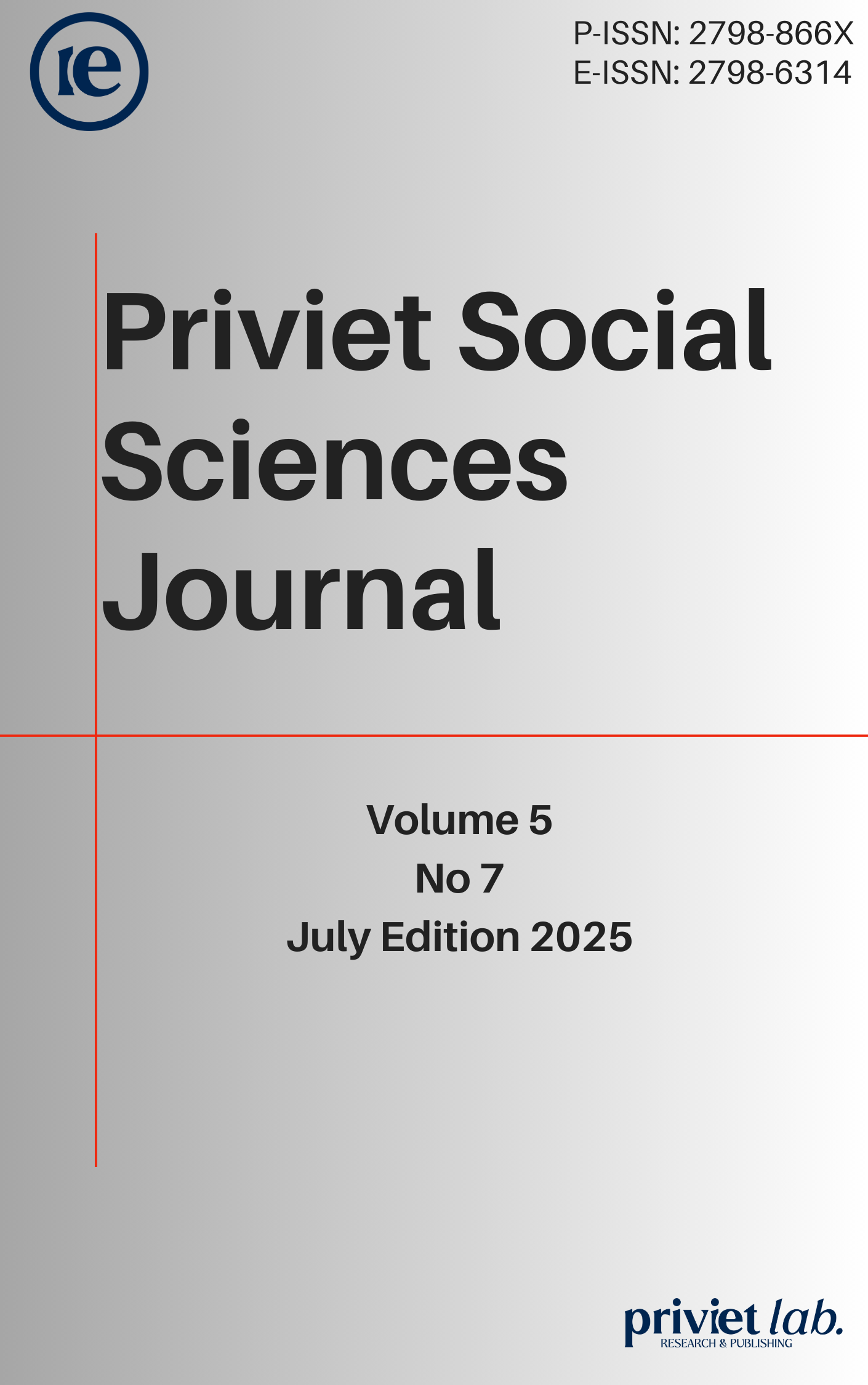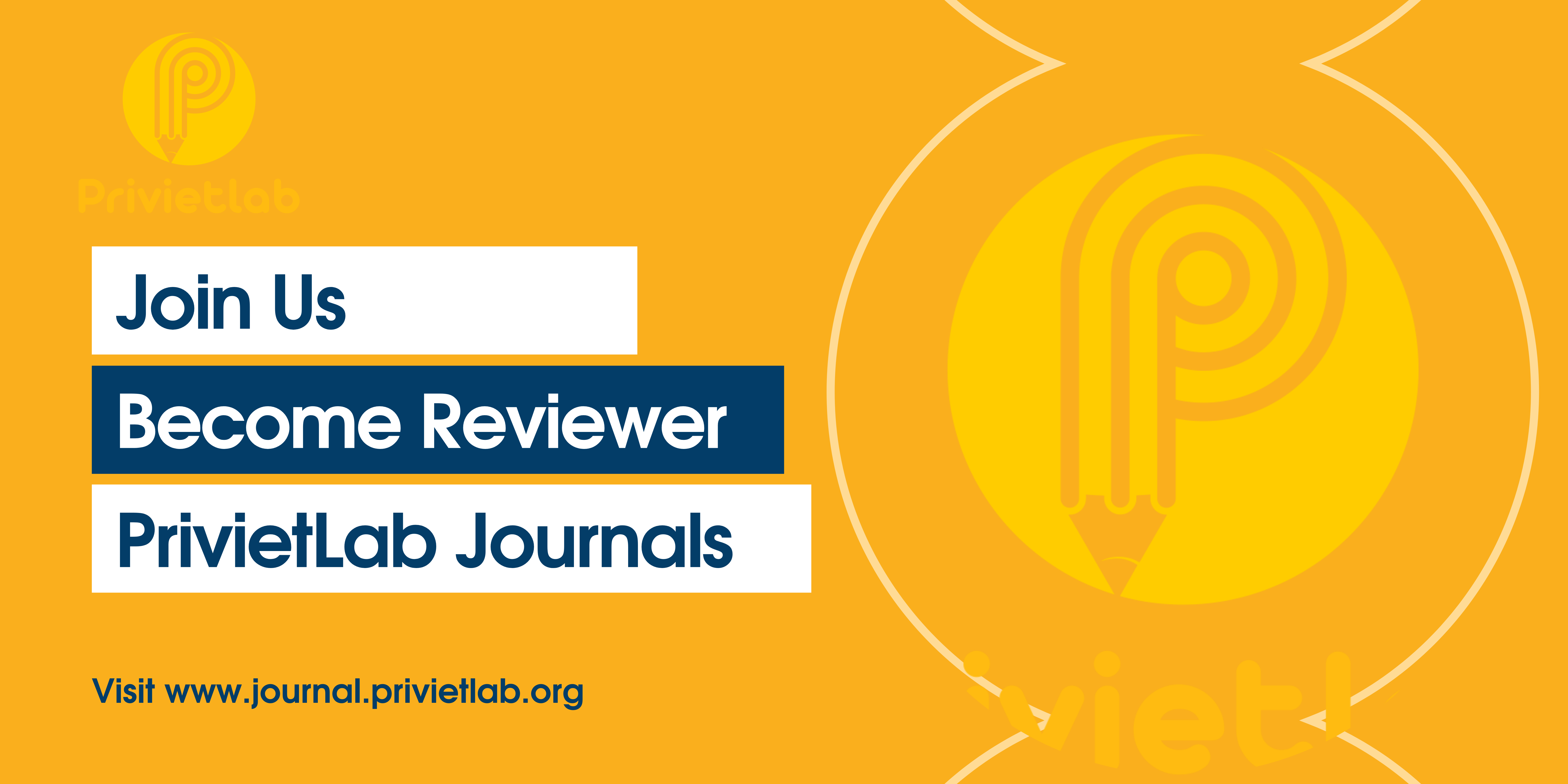BTS’s ‘Spring Day’ through the lens of narrative paradigm and semiotics
DOI:
https://doi.org/10.55942/pssj.v5i7.368Keywords:
BTS, Barthes Semiotics, lyrics and video analysis, narrative paradigm, spring-dayAbstract
This study focuses on analyzing the meanings of BTS’s Spring Day music video through the lens of the Narrative Paradigm theory and Roland Barthes semiotics. The study used two primary data collection techniques: observation and literature review. The analysis found nine key scenes showing three stages of emotional transformation: grief, longing, and emotional liberation. Each stage reflects a specific mood, isolation, sorrow, longing, healing, or hope. Additionally, an analysis of eight key lyrics reveals four narrative stages: profound loss and clinging to hope, struggling with normalcy, emerging from despair, and messages of hope and closure. These findings highlight how Spring Day combines visual and lyrical elements to convey the universal message of loss and recovery. BTS’s storytelling on Spring Day offers an emotionally resonant and culturally relevant narrative enriched with semiotic meaning.
References
Al, D. W., & Suyanto, S. (2017). Representasi Makna Pesan Moral dalam Lirik Lagu “Esok Kan Bahagia” Karya D’masiv [Representation of the Meaning of Moral Messages in the Lyrics of the Song "Tomorrow Is Happy" by D'masiv]. Riau University.
Amalia, B., Fatimah, A. N., Rizki, M. F., Sari, W. P., & El Farabi, Q. N. S. (2025). Startup strategies in building brand awareness. Priviet Social Sciences Journal, 5(5), 1–24. https://doi.org/10.55942/pssj.v5i5.379
Athanasopoulos, G., Eerola, T., Lahdelma, I., & Kaliakatsos-Papakostas, M. (2021). Harmonic organisation conveys both universal and culture-specific cues for emotional expression in music. PLoS ONE, 16(1). https://doi.org/10.1371/journal.pone.0244964
Barton, G., & Riddle, S. (2022). Culturally responsive and meaningful music education: Multimodality, meaning-making, and communication in diverse learning contexts. Research Studies in Music Education, 44(2), 345–362. https://doi.org/10.1177/1321103X211009323
Basri, S., & Sari, E. (2019). Tari Remo (Ngremong): Sebuah Analisis Teori Semiotika Roland Barthes Tentang Makna Denotasi Dan Konotasi Dalam Tari Remo (Ngremong) [Remo Dance (Ngremong): An Analysis of Roland Barthes' Semiotic Theory of the Meaning of Denotation and Connotation in Remo Dance (Ngremong)]. GETER : Jurnal Seni Drama, Tari Dan Musik, 2(1), 55–69. https://doi.org/10.26740/geter.v2n1.p55-69
Bhattacharya, A., Backonja, U., Le, A., Antony, R., Si, Y., & Lee, J. H. (2023, March). Understanding the influence of music on people’s mental health through dynamic music engagement model. In International Conference on Information (pp. 91-108). Cham: Springer Nature Switzerland.
Braun, V., & Clarke, V. (2023). Toward good practice in thematic analysis: Avoiding common problems and be (com) ing a knowing researcher. International journal of transgender health, 24(1), 1-6.
Burns, M. E. (2015). Recruiting Prospective Students WithStories: How Personal Stories Influence the Process of Choosing a University. Communication Quarterly, 63(1), 99–118. https://doi.org/10.1080/01463373.2014.965838
Cao, L. (2021). Beyond the Scene, Literally. Academic Article: Essay, 2, 27–33.
Clairini, R. (2022). Circuit-Of-Culture in International Campaign Practice: A Case of Bts Love Myself Campaign Collaborated With Unicef# Endviolence (Doctoral dissertation, President University).
Fisher, W. R. (1985). The narrative paradigm: An elaboration. Communication Monographs, 52(4), 347–367. https://doi.org/10.1080/03637758509376117
Hafizah, N., Fatimah, A. N., & Rizki, M. F. (2024). Komunikasi Persuasif Terkait Kesadaran Kesehatan Mental dalam Series “Daily Dose of Sunshine”: Analisis Semiotik Ferdinand De Saussure [Persuasive Communication Related to Mental Health Awareness in the "Daily Dose of Sunshine" Series: Ferdinand De Saussure's Semiotic Analysis]. Da’watuna: Journal of Communication and Islamic Broadcasting, 4(4), 1655–1666. https://doi.org/10.47467/dawatuna.v4i4.3065
Hamai, C. (2024). How the BTS Fandom Promotes Transculturalism Through Social Media (Master's thesis, University of Missouri-Columbia).
Hess, J. (2021). When Narrative is Impossible: Difficult Knowledge, Storytelling, and Ethical Practice in Narrative Research and Pedagogy in Music Education. Action, Criticism, and Theory for Music Education, 20(4), 79–113. https://doi.org/10.22176/act20.3.79
Howard, K. (2010). Chua Beng Huat and Koichi Iwabuchi (eds): East Asian Pop Culture: Analysing the Korean Wave. (TransAsia: Screen Cultures.) xi, 307 pp. Hong Kong: Hong Kong University Press, 2008. ISBN 978 962 209 893 0. Bulletin of the School of Oriental and African Studies, 73(1), 144–146. https://doi.org/10.1017/s0041977x09990589
James, S. (2024). Organizing fandom: communicative dynamics of global K-pop participatory fan culture (Doctoral dissertation).
JANG, W.-J., & Min-Ho, C. (2023). The Effect of Korean Wave (Hallyu) on the Music Industry. The Journal of Industrial Distibution & Business, 14 (11), 11–18. https://doi.org/10.13106/JIDB.2023.VOL14.NO11.1
Kanozia, R., & Ganghariya, G. (2021). More than K-pop fans: BTS fandom and activism amid COVID-19 outbreak. Media Asia, 48(4), 338–345. https://doi.org/10.1080/01296612.2021.1944542
Kim, J., & Kwon, S. H. (2022). K-Pop’s Global Success and Its Innovative Production System. Sustainability (Switzerland), 14(17). https://doi.org/10.3390/su141711101
Kim, K. H. (2021). BTS and the world music industry. In The Soft Power of the Korean Wave (pp. 107-117). Routledge.
Lee, M., & Lee, K. (2025). I Got You/You Got Me: Transitivity Analysis of BTS Fan and Healing Songs. In BTS and Languages (pp. 42-60). Routledge.
Lie, J. (2021). BTS, the highest stage of K-pop. In The soft power of the Korean Wave (pp. 118-128). Routledge.
Lestari, T. (2024, August 14) Spring Day Capai Satu Milyar Streaming di MelOn. RRI.co.id. https://www.rri.co.id/hiburan/900489/spring-day-capai-satu-milyar-streaming-di-melon
Malik, T. H. (2023). K-pop music diffusion in Korea and East Asia: the convergence of visual technology and concrete narratives. Asia Pacific Business Review, 29(5), 1251–1274. https://doi.org/10.1080/13602381.2023.2237908
Maria, C. (2020). Pesan dakwah akun Twitter NU Garis Lucu: analisis semiotik Roland Barthes [A Message from the Funny Line: Roland Barthes' Semiotic Analysis]. Skripsi: UIN Sunan Ampel Surabaya. https://core.ac.uk/download/pdf/359804846.pdf
Martilova, Y. (2024). Storytelling Komunikasi Visual Pernikahan Kaesang Dan Erina Pada Akun Instagram @Thebridestory [Storytelling of Kaesang and Erina's Wedding Visual Communication on the Instagram Account @Thebridestory]. Inovasi Pembangunan: Jurnal Kelitbangan, 12(01), 17–38. https://doi.org/10.35450/jip.v12i01.435
Min, B. S. (2024). The K-pop industry: competitiveness and sustainability. International Journal of Cultural Policy, 1–17. https://doi.org/10.1080/10286632.2024.2366979
Murtiawani, A., Fatimah, A. N., Rizki, M. F., Sari, W. P., & Seyma, Q. N. (2025). Komunikasi Persuasif Trailer Serial Drama dalam Menarik Minat Audiens [Persuasive Communication of Drama Series Trailers in Attracting the Audience's Interest]. Warta ISKI, 8(1), 62–82. https://doi.org/10.25008/wartaiski.v8i1.363
Nafsika, S. S., & Huda, A. S. (2021). Estetika : Persfektif Semiotika dan Semantik pada film Salam dari Kepiting Selatan [Semiotic and Semantic Perspective on the Salam of the South Crab film]. Irama, 3(2), 7–13.
Naik, S. (2024, June). From Digital Practices to Bond Formation: A Mixed-Method Case Study of BTS Online Fandom Communities. In Proceedings of the 16th Conference on Creativity & Cognition (pp. 488-492).
Nishad, A. (n.d.). From Nobody to Somebody: A cultural study of the rise of the Kpop group BTS in the US dominated music industry. www.tjells.com
Oktiani, Y. R., & Putri, E. J. (2022). Persuasive strategies in selected UNICEF speaker’s speech. Lingua Cultura, 16(2), 215-222.
Putra, E. D., Samudra, H., & Susanti, A. (2022). Cohesion and Coherence: An Analysis of the Students’ Narrative Writings. Acitya: Journal of Teaching and Education, 4(1), 16–24. https://doi.org/10.30650/ajte.v4i1.2287
Rahmawati, C. D., Hasan Busri, & Moh. Badrih. (2024). Makna Denotasi dan Konotasi Meme dalam Media Sosial Twitter: Kajian Semiotika Roland Barthes [The Meaning of Denotation and Connotation of Memes in Twitter Social Media: A Study of Roland Barthes' Semiotics]. Jurnal Onoma: Pendidikan, Bahasa, Dan Sastra, 10(2), 1244–1256. https://doi.org/10.30605/onoma.v10i2.3479
Saptoyo, R. & Galih, B. (2022, June 15) Kilas Balik Prestasi dan Rekor BTS yang dicapai dalam 9 Tahun [Flashbacks of BTS's Achievements and Records Achieved in 9 Years]. Kompas.com. https://www.kompas.com/cekfakta/read/2022/06/15/202100882/kilas-balik-prestasi-dan-rekor-bts-yang-dicapai-dalam-9-tahun-?page=all#google_vignette
Sierotowicz, T. (2024). Theology of Science as an Intertextual Reading: The Bible, the Book of Nature, and Narrative Paradigm. Religions, 15(3), 1–19. https://doi.org/10.3390/rel15030293
Sihombing, L. H. (2021). Analyzing the Impact of BTS on Resolving the Problem of Youth Mental Health. JISIP (Jurnal Ilmu Sosial Dan Pendidikan), 5(2). https://doi.org/10.58258/jisip.v5i2.1801
Sonke, J., Pesata, V., Colverson, A., Morgan-Daniel, J., Rodriguez, A. K., Carroll, G. D., Burch, S., Abraham, A., Akram, S., Marjani, S., Belden, C., & Karim, H. (2025). Relationships between arts participation, social cohesion, and well-being: an integrative review of evidence. Frontiers in Public Health, 13. https://doi.org/10.3389/fpubh.2025.1589693
So Yeon Park, Nicole K. Santero, Blair Kaneshiro, and Jin Ha Lee. 2021. Armed in Army: A Case Study of How BTS Fans Successfully Collaborated to #MatchAMillion for Black Lives Matter. In Proceedings of the 2021 CHI Conference on Human Factors in Computing Systems (CHI’21). Association for Computing Machinery, New York, NY, USA, Article 336, 1–14. https://doi.org/10.1145/3411764.3445353
Tantama, J., & Agustiningsih, G. (2013). Studi Paradigma Naratif Walter Fisher Pada Aktivitas “Nongkrong” Di Kalangan Remaja Madya [Walter Fisher's Narrative Paradigm Study on "Hanging Out" Activities Among Middle Adolescents]. Jurnal Komunikasi Dan Bisnis, 1(1), 58–74. https://jurnal.kwikkiangie.ac.id/index.php/JKB/article/download/131/28/320
Taufik, I., Hidayat, R., Kurnia, D., & Putra, S. (2024). Strategi Pengelolaan Konten Instagram @ laakfks dalam Memenuhi Informasi Mahasiswa Fakultas Komunikasi dan Ilmu Sosial [Instagram Content Management Strategy @ laakfks in Meeting Information for Students of the Faculty of Communication and Social Sciences]. eProceedings of Management, 11(6), 7567–7573. https://openlibrarypublications.telkomuniversity.ac.id/index.php/management/article/view/25272
Tinarbuko, S. (2008). Semiotic of public service advertisement. Indonesian Journal of Communication Studies, 1(2), 63680. https://media.neliti.com/media/publications/63680-EN-semiotic-of-public-service-advertisement.pdf
Trimo Wati, T. W., Dina Safira Ikmaliani, & Mustolehudin. (2022). Representasi Makna Denotasi dan Konotasi dalam Lirik Lagu Kun Fayakun (Analisis Semiotika Roland Barthes) [Representation of the Meaning of Denotation and Connotation in Kun Fayakun Song Lyrics (Semiotic Analysis of Roland Barthes)]. Alibbaa’: Jurnal Pendidikan Bahasa Arab, 3(1), 73–102. https://doi.org/10.19105/ajpba.v3i1.5172
Wahyuningratna, R. N., Laura, R., & Saputra, W. T. (2023). Representasi Harapan Dalam Mv Bts “Spring Day” (Kajian Semiotika Roland Barthes) [Representasi Harapan Dalam Mv Bts “Spring Day” (Kajian Semiotika Roland Barthes)]. Jurnal CommLine, 08(01), 1–10. https://doi.org/10.33822/jep.v6i2.4912
Downloads
Published
How to Cite
Issue
Section
License
Copyright (c) 2025 Decency Ananda Sylphania, Shafa Safira Najah, Anggun Nadia Fatimah

This work is licensed under a Creative Commons Attribution 4.0 International License.

















